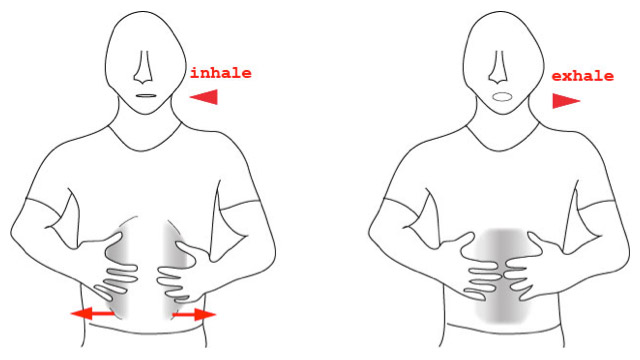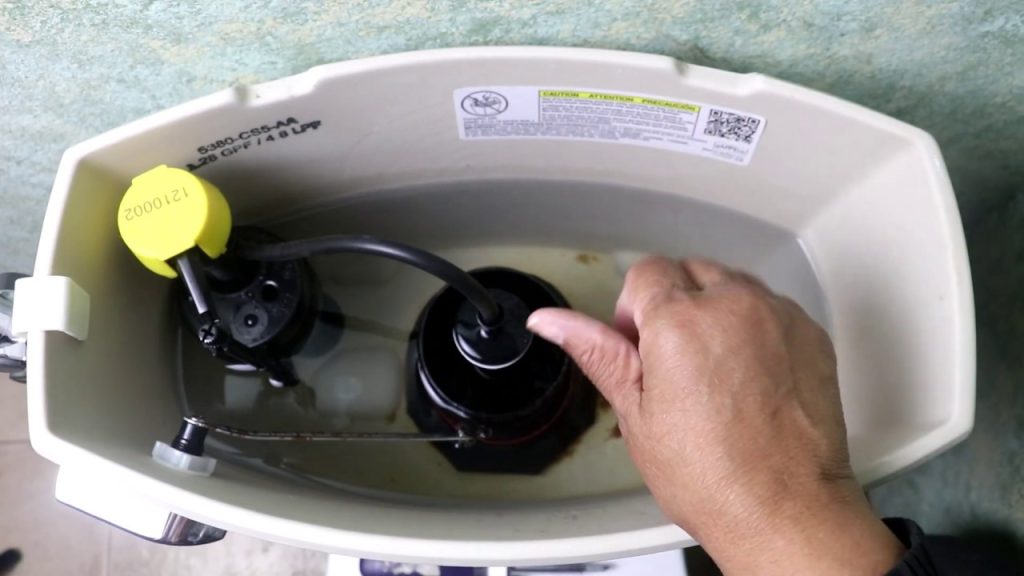Knowing how to breathe when running can improve your performance. It also makes running more enjoyable.
Proper breathing is key to a good run. It helps you avoid fatigue and maintain energy. Many runners struggle with their breathing. They often find themselves gasping for air. This makes running harder than it should be. Learning the right way to breathe can change your running experience.
It can make it easier and more fun. With good breathing techniques, you can run longer and faster. You will feel more comfortable and less tired. So, let’s explore some tips on how to breathe properly when you run. This will help you get the most out of your running sessions.

Credit: www.runandbecome.com
Importance Of Proper Breathing
Proper breathing is crucial for runners. It affects your stamina, performance, and overall running experience. Breathing correctly can make your runs more enjoyable and less tiring. Let’s dive into why proper breathing is so important.
Impact On Stamina
Proper breathing increases your oxygen intake. More oxygen means more energy for your muscles. This helps you run longer without feeling exhausted. Shallow breathing reduces oxygen supply. This leads to quicker fatigue. Deep, rhythmic breaths keep your stamina up.
Effect On Performance
Good breathing techniques improve your running performance. Consistent oxygen flow keeps your muscles working efficiently. This prevents cramps and side stitches. Focusing on your breath also keeps you calm. A relaxed mind enhances performance. You run better and faster when you’re not stressed.
Common Breathing Mistakes
Running can be challenging, especially if you struggle with your breathing. Many runners make common breathing mistakes that hinder their performance. Understanding these errors is crucial to improve your stamina and enjoy your runs.
Shallow Breathing
One common mistake is shallow breathing. This involves taking quick, short breaths that don’t fully oxygenate your lungs. When you breathe this way, your body doesn’t get the oxygen it needs, leading to fatigue. Focus on deep, belly breaths. This technique ensures your lungs are fully engaged and provides better oxygen flow.
Irregular Patterns
Another mistake is irregular breathing patterns. Many runners breathe sporadically, which disrupts their rhythm. This inconsistency can make running feel harder than it is. Aim for a steady, rhythmic pattern. Try matching your breaths with your steps to maintain a consistent pace. For example, breathe in for three steps and out for two.
Basic Breathing Techniques
Running is a great way to stay fit and healthy. But many runners struggle with breathing. Here, we’ll explore some basic breathing techniques. These can help you run better and feel more comfortable.
Nose Vs. Mouth Breathing
There is a debate about whether to breathe through your nose or mouth while running. Each method has its pros and cons.
| Breathing Method | Benefits | Drawbacks |
|---|---|---|
| Nose Breathing |
|
|
| Mouth Breathing |
|
|
Rhythmic Breathing
Rhythmic breathing is a technique that can help you control your breath. It involves syncing your breath with your steps.
This method can reduce the risk of injuries and improve your running efficiency. Here are some steps to practice rhythmic breathing:
- Start with a 3:2 pattern. Inhale for three steps and exhale for two steps.
- As you get comfortable, try a 2:1 pattern. Inhale for two steps and exhale for one step.
- Adjust the pattern based on your pace and comfort level.
Remember, it’s important to practice these techniques during your runs. Over time, they will become second nature.
Advanced Breathing Methods
Advanced breathing methods can enhance your running efficiency. They help improve oxygen delivery to muscles. This boosts performance and endurance. Here are two advanced techniques you can try: diaphragmatic breathing and box breathing.
Diaphragmatic Breathing
Diaphragmatic breathing, also known as belly breathing, uses the diaphragm instead of the chest. This technique promotes deeper and more efficient breaths. Here’s how to practice diaphragmatic breathing:
- Place one hand on your chest and the other on your abdomen.
- Inhale deeply through your nose, ensuring your abdomen rises, not your chest.
- Exhale slowly through your mouth, feeling your abdomen fall.
Practice this regularly, both during and outside of runs. It can reduce fatigue and improve stamina.
Box Breathing
Box breathing, also known as square breathing, is a technique that involves equal intervals of inhaling, holding, exhaling, and holding. This method can help manage stress and control your breathing pace. Follow these steps for box breathing:
| Step | Duration (seconds) |
|---|---|
| Inhale | 4 |
| Hold | 4 |
| Exhale | 4 |
| Hold | 4 |
Repeat this cycle for several minutes. This technique can help maintain a steady breathing rhythm during runs.
Using these advanced breathing methods can elevate your running experience. They enhance oxygen intake and reduce breathlessness. Practice them regularly for the best results.
Breathing Exercises For Runners
Proper breathing is vital for runners. It enhances performance and endurance. The right breathing techniques can make running easier and more enjoyable. Below, we’ll explore some essential breathing exercises for runners.
Warm-up Routines
Starting your run with a good warm-up is essential. It prepares your body for the workout ahead. Here are a few simple warm-up exercises:
- Diaphragmatic Breathing: Breathe deeply from your diaphragm. Place one hand on your stomach. Inhale through your nose. Feel your stomach rise. Exhale through your mouth. Repeat for 5-10 breaths.
- Nasal Breathing: Breathe in and out through your nose. This technique warms up your nasal passages. It also prepares your lungs for deeper breaths.
- Box Breathing: Inhale for 4 counts. Hold your breath for 4 counts. Exhale for 4 counts. Hold again for 4 counts. Repeat this cycle 4-5 times.
Cool-down Techniques
Cooling down after your run is as important as warming up. It helps your body recover. Here are some effective cool-down techniques:
- Pursed-Lip Breathing: Inhale through your nose. Exhale through pursed lips. This slows your breathing. It helps you relax.
- Alternate Nostril Breathing: Close your right nostril with your thumb. Inhale through your left nostril. Close your left nostril with your finger. Exhale through your right nostril. Repeat for 5-10 cycles.
- Stretch and Breathe: Perform gentle stretches. Focus on your breath. Hold each stretch for 20-30 seconds. Breathe deeply throughout.
Incorporate these exercises into your running routine. They will help you breathe better. You’ll notice improved performance and comfort.

Credit: runnersconnect.net
Monitoring Your Breathing
Understanding how to breathe properly while running can enhance your performance and endurance. Monitoring your breathing allows you to maintain a steady pace and avoid fatigue. Let’s explore some effective ways to monitor your breathing.
Using Technology
Modern technology offers various tools to help monitor your breathing. You can use smartwatches and fitness trackers to measure your breathing rate. These devices provide real-time data, helping you adjust your breathing patterns during runs.
Some apps are designed to track your breathing. They analyze your breathing and provide feedback. This information can help you make necessary adjustments to improve your running efficiency.
| Device | Features |
|---|---|
| Smartwatches | Real-time breathing rate, heart rate monitoring |
| Fitness Trackers | Breathing patterns, activity tracking |
| Breathing Apps | Feedback on breathing efficiency, guided exercises |
Self-assessment Tips
Self-assessment can be a simple yet effective way to monitor your breathing. Pay attention to how you feel during your run. If you feel out of breath, slow down and take deep breaths.
Use the talk test to assess your breathing. You should be able to speak a few words without gasping for air. If you can’t, you might be running too fast.
Another method is counting your steps while breathing. For example, breathe in for three steps and out for two steps. This technique helps you maintain a consistent breathing pattern.
- Focus on deep, diaphragmatic breathing.
- Maintain a rhythm that feels comfortable.
- Adjust your pace if needed.
Regular practice will help you find a breathing pattern that suits your running style.
Integrating Breathing With Running
Integrating breathing with running is essential for a smooth and efficient run. Proper breathing ensures your muscles get enough oxygen and help prevent fatigue. Knowing how to breathe correctly can make your runs more enjoyable and effective.
Synchronizing Steps And Breaths
One effective technique is to synchronize your steps with your breaths. Try the 3:2 pattern. Inhale for three steps, then exhale for two steps. This pattern helps maintain a steady breathing rhythm and matches your body’s natural movements. Practice this pattern during your training runs. It can help you find a rhythm that feels natural and comfortable.
Maintaining Consistency
Consistency in breathing is crucial. Avoid holding your breath. Focus on a steady, rhythmic pattern. Consistent breathing helps maintain a good oxygen flow to your muscles. It also keeps your energy levels stable during the run.
Practice breathing techniques during your warm-ups and cool-downs. This helps your body get used to the patterns. Remember, the goal is to make breathing an effortless part of your run.

Credit: www.wikihow.com
Adapting To Different Conditions
When running, your breathing technique changes based on the environment. Adapting to different conditions is vital for optimal performance. Here, we explore how to breathe in various scenarios to keep your run efficient and comfortable.
Breathing In Cold Weather
Running in cold weather can be challenging. Cold air can irritate your airways and make breathing harder. To counter this, breathe in through your nose and out through your mouth. This warms the air before it reaches your lungs.
Wearing a scarf or a mask over your mouth can also help. This traps moisture and warmth, making the air easier to inhale. Focus on deep, steady breaths to maintain a consistent flow of oxygen.
Handling High Altitude
Running at high altitude is tough due to lower oxygen levels. This requires you to adapt your breathing technique. Take slower, deeper breaths to maximize oxygen intake. Use a 2:2 breathing pattern, inhaling for two steps and exhaling for two steps.
Stay hydrated and give your body time to adjust. Training at high altitude can improve your overall lung capacity. Remember, patience is key as your body gets used to the thin air.
Frequently Asked Questions
How To Breathe Properly While Running?
To breathe properly while running, use a rhythmic pattern. Inhale through your nose and exhale through your mouth. This helps maintain oxygen levels and reduce fatigue.
Is It Better To Breathe Through The Nose Or Mouth?
Breathing through the nose filters and warms the air. However, mouth breathing provides more oxygen and is often easier during intense runs.
How Can I Improve My Breathing Technique?
To improve your breathing, practice diaphragmatic breathing. This involves deep breaths from the abdomen rather than shallow chest breaths.
Why Do I Get Out Of Breath Quickly?
Getting out of breath quickly can be due to poor conditioning or improper breathing technique. Gradually increase your running intensity and focus on rhythmic breathing.
Conclusion
Running with proper breathing enhances performance. It also reduces fatigue. Practice these techniques regularly. Notice improvements in your stamina and comfort. Keep your breathing steady and deep. It helps fuel your muscles efficiently. Stay mindful of your breath. Adapt these tips to your pace.
Enjoy a more comfortable running experience. Breathe well, run better.



